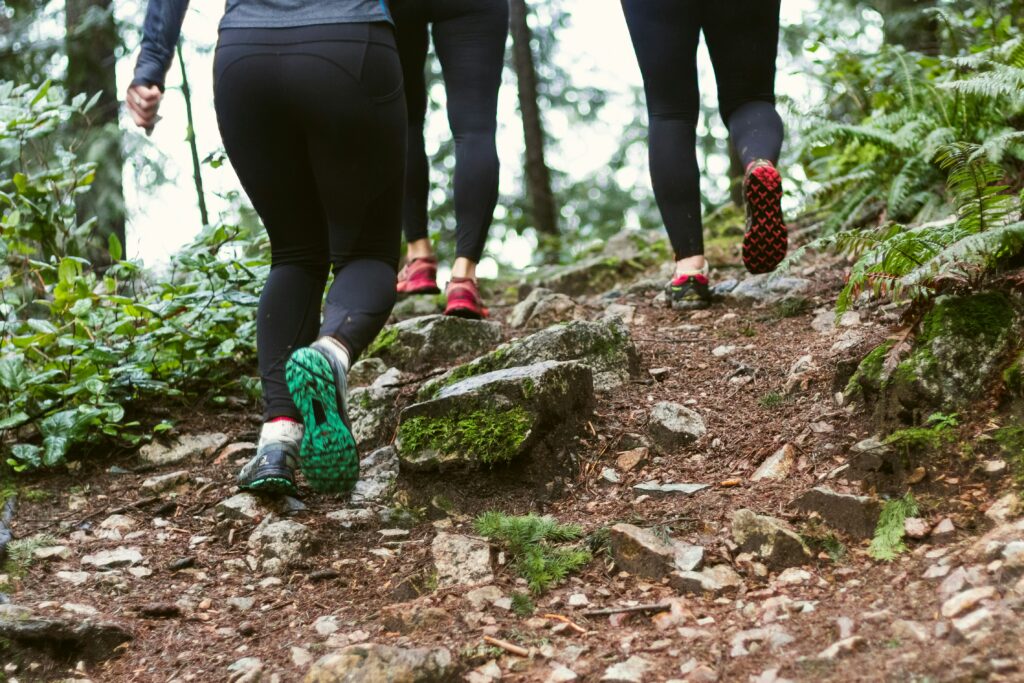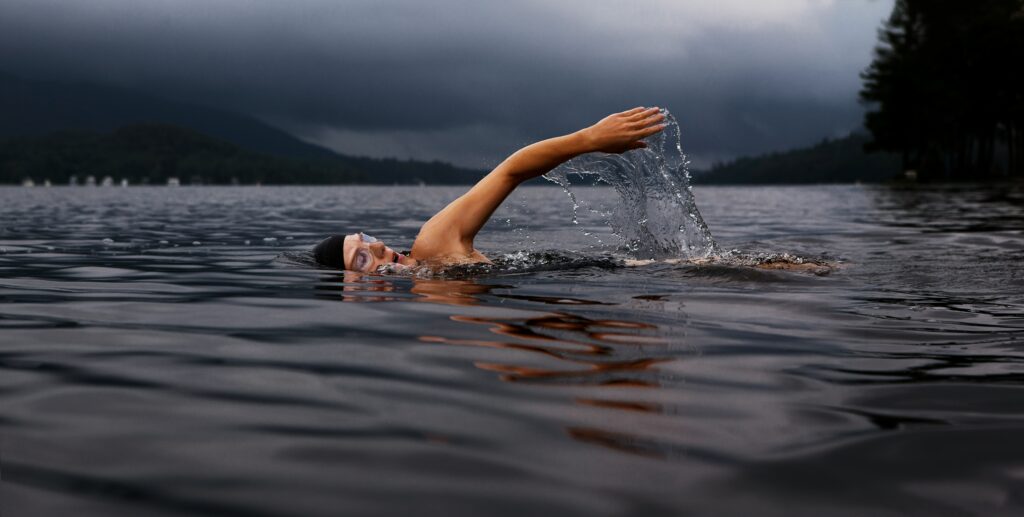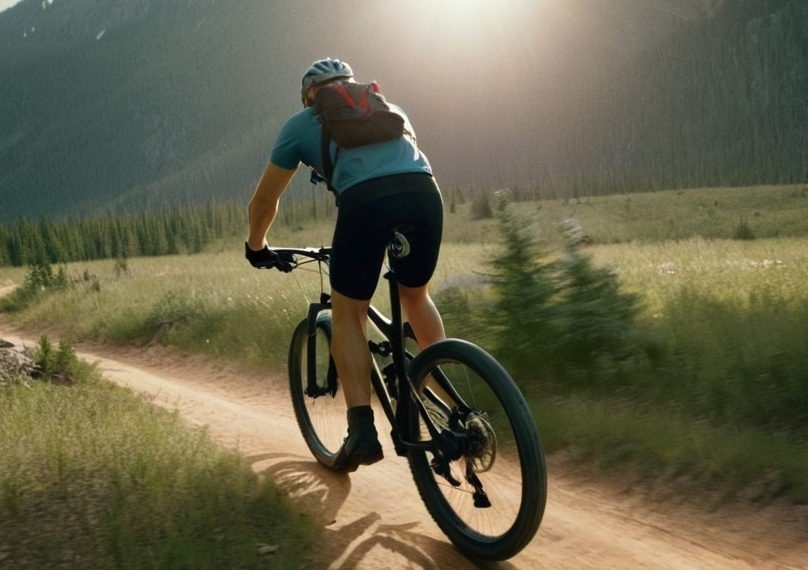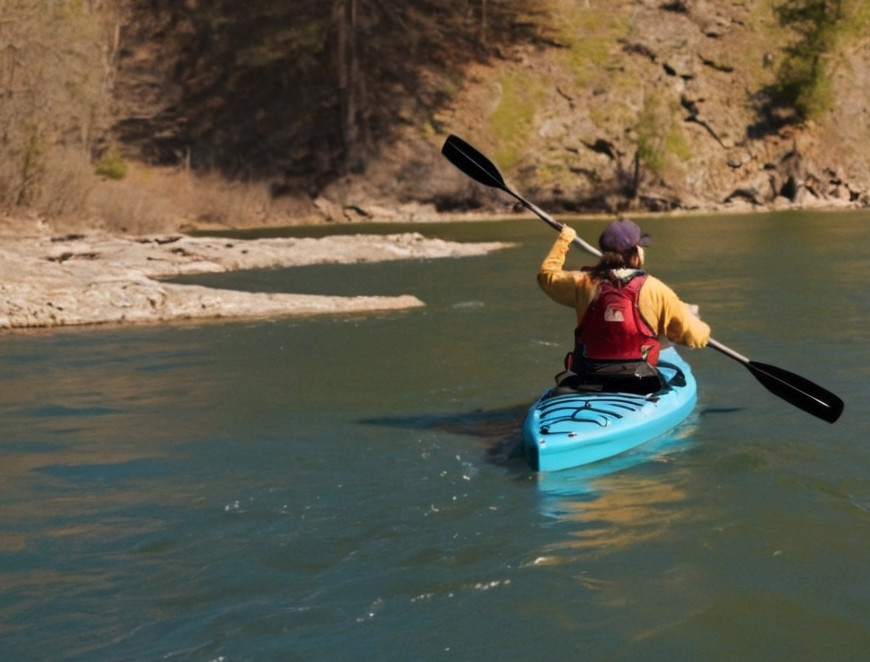Cardio Conditioning for Adventurers Who Hate the Gym
The thrill of the open trail, the serenity of a secluded lake, the adrenaline rush of a challenging climb – the outdoors beckons with a vast array of experiences. But these adventures often demand a certain level of outdoor fitness. Whether you’re scaling a mountain peak, navigating a winding river, or venturing deep into the backcountry, a strong and well-conditioned body is your passport to a more fulfilling and enjoyable outdoor experience.
Crush your next outdoor adventure with this guide to building peak cardiovascular outdoor fitness! We’ll explore effective cardio exercises for hiking, cycling, kayaking, and more, helping you conquer trails, paddle stronger, and explore farther. Get ready to unleash your inner athlete and transform your outdoor experience!
Building Your Base: Cardiovascular Endurance
Cardiovascular endurance, often referred to as “cardio,” forms the foundation for all outdoor activities. It’s your engine, powering you through long hikes, propelling you up steep inclines, and keeping you paddling strong on the water. Here are some effective ways to build your cardio for the outdoor fitness:
- Running/Jogging: A classic and highly effective cardio exercise, running strengthens your heart and lungs while working various muscle groups. Start with short distances and gradually increase duration and intensity.
- Swimming: Low-impact and easy on the joints, swimming offers a fantastic full-body workout that is excellent for building cardiovascular endurance.
- Cycling: Hit the trails or spin indoors – cycling provides a fantastic cardio workout that strengthens your legs and core. Consider incorporating interval training for added benefits.
- Paddling (Kayaking, Canoeing): Engaging your upper body and core muscles, paddling offers a scenic and efficient way to build cardio endurance.
Running/Jogging Cardio Workout
This workout is designed to progressively increase both intensity and duration, building your cardiovascular endurance for outdoor adventures. It incorporates interval training, which alternates between periods of high-intensity effort and recovery, offering a more efficient and effective way to boost your outdoor fitness.

Warm-up (10 minutes)
- Light cardio (5 minutes): Begin with 5 minutes of light cardio to gently elevate your heart rate and prepare your body for exercise. This could involve brisk walking, jogging at a very easy pace, or light dynamic stretches like arm circles, leg swings, and torso twists.
- Dynamic stretches (5 minutes): Focus on dynamic stretches that mimic the movements you’ll be performing during the main workout. For running, this could include high knees, butt kicks, and lunges with arm circles. Perform each stretch for 30 seconds.
Cycling Main Workout (30 minutes)
This outdoor fitness workout is structured as a series of intervals, alternating between high-intensity jogging and recovery periods of brisk walking.
- Interval 1 (4 minutes): Jog at a comfortable yet challenging pace for 2 minutes. Aim for a pace where you can still hold a conversation, but it’s difficult to sing comfortably.
- Recovery 1 (2 minutes): Walk briskly for 2 minutes, allowing your heart rate to decrease slightly but maintaining some level of exertion.
- Interval 2 (3 minutes): Increase your jogging pace to a slightly harder level for 1.5 minutes, pushing yourself a bit further than the previous interval.
- Recovery 2 (1.5 minutes): Walk briskly for 1.5 minutes, offering your body a short recovery period.
- Interval 3 (2 minutes): Maintain the slightly harder jogging pace from interval 2 for 1 minute.
- Recovery 3 (1 minute): Walk briskly for 1 minute.
- Interval 4 (4 minutes): Reduce your jogging pace slightly from interval 2 but maintain a challenging effort for 2 minutes.
- Recovery 4 (2 minutes): Walk briskly for 2 minutes, allowing your heart rate to come down further.
- Interval 5 (3 minutes): Finish with a final interval at your comfortable yet challenging pace from interval 1 for 1.5 minutes.
- Recovery 5 (1.5 minutes): Walk briskly for the final 1.5 minutes of recovery.
- Cool-down and Static stretches (5 minutes): After your workout, dedicate time to static stretches that target major muscle groups used during running, such as hamstrings, quadriceps, calves, glutes, and core. Hold each stretch for 30-60 seconds.
Tips
Listen to your body: Adjust the intensity and duration of the intervals based on your fitness level. Don’t push yourself to the point of pain.
Progression: As your fitness improves, gradually increase the duration of the high-intensity intervals and decrease the recovery periods.
Terrain variation: Consider incorporating running on different terrains like hills, trails, or even a treadmill to add variety and challenge to your workouts.
Swimming Cardio Workout
This swimming workout is designed to progressively increase intensity and distance, building your cardiovascular endurance for swimming adventures.

Warm-up (10 minutes)
- Light cardio (5 minutes): Begin with 5 minutes of light cardio on land to gently elevate your heart rate and prepare your body for swimming. This could involve light jumping jacks, arm circles, leg swings, or easy stretches.
- Dynamic stretches (5 minutes): Focus on dynamic stretches that mimic swimming motions, including arm circles forward and backward, torso twists, high knees with arm reaches, and ankle rolls.
Swimming Main Workout
This workout is structured as a series of drills and intervals, focusing on different swimming techniques and building endurance.
Drill 1 (5 minutes)
Sculling (2.5 minutes each side): Practice sculling on your front and back for 2.5 minutes each, focusing on proper body position and hand technique. This low-intensity drill helps warm up your core and shoulders.
Drill 2 (5 minutes)
Kick drills (2.5 minutes each leg): Isolate your leg kick by holding onto a kickboard and focusing on flutter kick with a pointed toe for 2.5 minutes. Repeat for the other leg. This drill strengthens your legs, a crucial element for efficient swimming.
Interval Training (15 minutes)
- Interval 1 (4 x 100m): Swim 4 sets of 100 meters freestyle at a moderate pace with a short rest (30 seconds) in between each set. Focus on maintaining proper form and breathing technique.
- Interval 2 (3 x 200m): Increase the distance to 2 sets of 200 meters freestyle at a slightly challenging pace, with a 45-second rest period in between.
- Interval 3 (2 x 100m): Finish with 2 sets of 100 meters freestyle at a faster pace, pushing yourself for the final interval. Maintain good form despite the increased effort.
Cool-down (5 minutes)
- Easy swimming (2 minutes): Spend 2 minutes swimming slowly and focusing on long, deep breaths to bring your heart rate down gradually.
- Static stretches (3 minutes): After exiting the pool, perform static stretches that target major muscle groups used during swimming, like shoulders, back, hamstrings, quads, and calves. Hold each stretch for 30-60 seconds.
Tips
Focus on form: Maintaining proper swimming technique is crucial for maximizing efficiency and preventing injuries. Don’t hesitate to ask a lifeguard or swim coach for form pointers if needed.
Breathing control: Efficient breathing is essential for sustained swimming. Practice controlled breathing throughout the workout.
Hydration: Stay hydrated by drinking plenty of water before, during, and after your workout, especially if swimming outdoors.
Cycling Cardio Workout
This cycling workout incorporates both outdoor and indoor cycling options (using a stationary bike) to offer flexibility based on weather and preferences.

Warm-up (10 minutes)
- Light cardio (5 minutes): Begin with 5 minutes of light cardio on land, like easy cycling on a stationary bike, jumping jacks, or dynamic stretches (leg swings, arm circles, torso twists).
- Dynamic stretches (5 minutes): Focus on stretches that target major cycling muscles, including hamstrings, quadriceps, calves, and core. Perform each stretch for 30 seconds.
Outdoor Cycling Option (30 minutes)
- Steady Pace (10 minutes): Find a comfortable yet sustained pace on flat terrain, focusing on smooth pedaling and proper form.
- Hill Climbs (3 sets x 2 minutes): Locate a moderate hill and climb it at a challenging but sustainable pace for 2 minutes. Recover by coasting or pedaling slowly on flat terrain for 2 minutes between each climb.
- Interval Training (3 sets x 1 minute): Find a flat stretch of road and alternate between high-intensity bursts (pushing yourself for 1 minute) and recovery periods (pedaling at a relaxed pace for 1 minute).
Indoor Cycling Option (30 minutes)
- Warm-up (5 minutes): Begin with an easy spinning session on the stationary bike for 5 minutes at a low resistance level. This gets your blood flowing and prepares your legs for more intense work.
- Main Workout (20 minutes): This portion will focus on High-Intensity Interval Training (HIIT) to boost your cardiovascular endurance.
- Interval 1 (4 x 1 minute): Pedal at a moderate intensity for 1 minute, followed by 1 minute of high-intensity effort where you push yourself to increase your resistance and cadence (revolutions per minute). Maintain proper form throughout the interval. Recover for 1 minute at a low resistance level between each interval.
- Interval 2 (3 x 2 minute): Increase the work interval to 2 minutes while maintaining a high intensity and challenging resistance. Recover for 1 minute with light pedaling at a low resistance level.
- Interval 3 (2 x 1 minute): Shorten the work interval back to 1 minute but maintain high intensity. Recover for a final minute of light pedaling at a low resistance level.
- Cool-down (5 minutes): Spend 5 minutes spinning the bike at a very easy pace with minimal resistance. This allows your heart rate to gradually decrease and your body to return to a resting state.
Tips:
- Gear Up: If you’re cycling outdoors, wear comfortable clothing and a helmet. Consider using cycling shorts with a padded seat to increase comfort on longer rides.
- Hydration: Drink plenty of water before, during, and after your cycling workout, especially on hot days.
- Listen to Your Body: Don’t hesitate to adjust the intensity or duration of the workout based on your fitness level. It’s important to challenge yourself but also avoid pushing yourself to the point of exhaustion or pain.
Paddling Cardio Workout
This workout is designed for kayaking or canoeing and incorporates interval training to maximize your cardiovascular benefits. Important Note: Always prioritize safety when paddling. Check weather conditions, wear a life jacket, and choose a body of water suitable for your skill level.

Warm-up (10 minutes)
- Light cardio (5 minutes): Begin with 5 minutes of light cardio on land, like jumping jacks, arm circles, or dynamic stretches (lunges with arm twists, torso rotations).
- Dynamic stretches (5 minutes): Focus on stretches that mimic paddling motions, including torso twists, shoulder rolls, and high knees with arm reaches.
Paddling Main Workout (30 minutes)
This workout utilizes intervals of steady paddling and bursts of speed with rest periods in between.
- Steady Pace (5 minutes): Paddle at a comfortable yet sustained pace, focusing on smooth and efficient strokes.
- Speed Burst (1 minute): Increase your paddling pace significantly, pushing yourself for a minute. Maintain proper form while maximizing your effort.
- Rest (2 minutes): Allow your heart rate to decrease slightly by taking slow, deep breaths and coasting with minimal strokes.
- Steady Pace (4 minutes): Return to your comfortable paddling pace for a slightly longer duration than the first steady interval.
- Speed Burst (30 seconds): Perform a shorter burst of high-intensity paddling for 30 seconds, maintaining good form.
- Rest (1.5 minutes): Take a shorter rest period, allowing your heart rate to recover slightly.
- Repeat: Continue repeating the sequence of steady pace, speed burst, and rest for the remaining workout duration, gradually increasing the speed burst duration and decreasing rest periods as your fitness improves.
- Cool-down (2 minutes): Paddle at a very slow pace, focusing on smooth strokes and long, deep breaths.
Cool-down (5 minutes)
- Static stretches (5 minutes): Back on land, perform static stretches that target major muscle groups used during paddling, like shoulders, back, core, and legs. Hold each stretch for 30-60 seconds.
Tips
- Focus on form: Maintain proper paddling technique throughout the workout to maximize efficiency and prevent injury.
- Hydration: Stay hydrated by drinking plenty of water before, during, and after your workout.
- Weather conditions: Adjust your workout intensity based on wind and water conditions.
Building Consistency: The Key to Outdoor Fitness Success
While these sample workouts provide a blueprint for boosting your cardiovascular endurance, remember: consistency is key! Aim for at least 2-3 dedicated cardio workouts per week to see significant improvements in your fitness and outdoor performance. Here’s why consistency is crucial:
- Improved Efficiency: Regular cardio exercise strengthens your heart muscle, allowing it to pump blood more efficiently. This translates to better oxygen delivery throughout your body, enhancing your stamina and reducing fatigue during outdoor activities.
- Increased Endurance: Over time, consistent cardio workouts build your muscular and cardiovascular endurance. You’ll be able to hike longer distances, paddle stronger against currents, and cycle for extended periods without feeling winded.
- Metabolic Boost: Cardio exercise increases your metabolism, the rate at which your body burns calories. This not only helps with weight management but also supports sustained energy levels during outdoor adventures.
- Mental Toughness: Sticking to a regular workout routine builds mental discipline and resilience. You’ll learn to push through discomfort and find the motivation to keep going, translating into a stronger mindset for tackling challenging outdoor pursuits.
Beyond Cardio: A Well-Rounded Approach
Building a strong foundation for outdoor adventures goes beyond just cardiovascular endurance. Here’s how to create a well-rounded outdoor fitness program:
- Strength Training: Incorporating strength training 2-3 times per week is crucial. This builds muscle strength and power, essential for carrying heavy backpacks, maneuvering on uneven terrain, and improving paddling efficiency. Focus on exercises that target major muscle groups like legs, core, back, and shoulders.
- Balance Exercises: Don’t underestimate the importance of balance! Regularly practicing exercises like single-leg stands, yoga poses, and core work will enhance your stability and coordination, leading to better performance and reduced risk of falls on uneven outdoor surfaces.
- Rest and Recovery: Allow your body adequate rest and recovery between workouts. This is when your muscles rebuild and strengthen. Aim for at least one rest day per week, and prioritize good sleep habits for optimal recovery.
The Power of Variety: Keeping Your Workouts Fresh
Incorporating a variety of cardio activities into your outdoor fitness routine keeps things interesting and challenges different muscle groups. Here are some ideas:
- Trail Running: Take your running workouts off-road for a scenic and challenging experience.
- Spin Class: Indoor cycling classes offer a fun and social way to get a high-intensity cardio workout.
- Group Fitness Classes: Explore group fitness classes like bootcamp or HIIT (High-Intensity Interval Training) for a dynamic and motivating workout experience.
- Open Water Swimming: If you have the skills and safety precautions in place, explore open water swimming for a refreshing change from the pool.
By following these principles of consistency, adding strength training and balance exercises, and incorporating variety into your workouts, you’ll be well on your way to building a robust fitness foundation that empowers you to conquer any outdoor adventure! Remember, consult with a doctor before starting any new exercise program, especially if you have any health concerns. So lace up your boots, grab your gear, and get ready to experience the outdoors with newfound strength, endurance, and confidence!
REMEMBER: This are just a sample workouts. You can adjust it based on your running, swimming, cycling, and paddling experience and fitness levels. Consult with a doctor before starting any new exercise program, especially if you have any health concerns.
